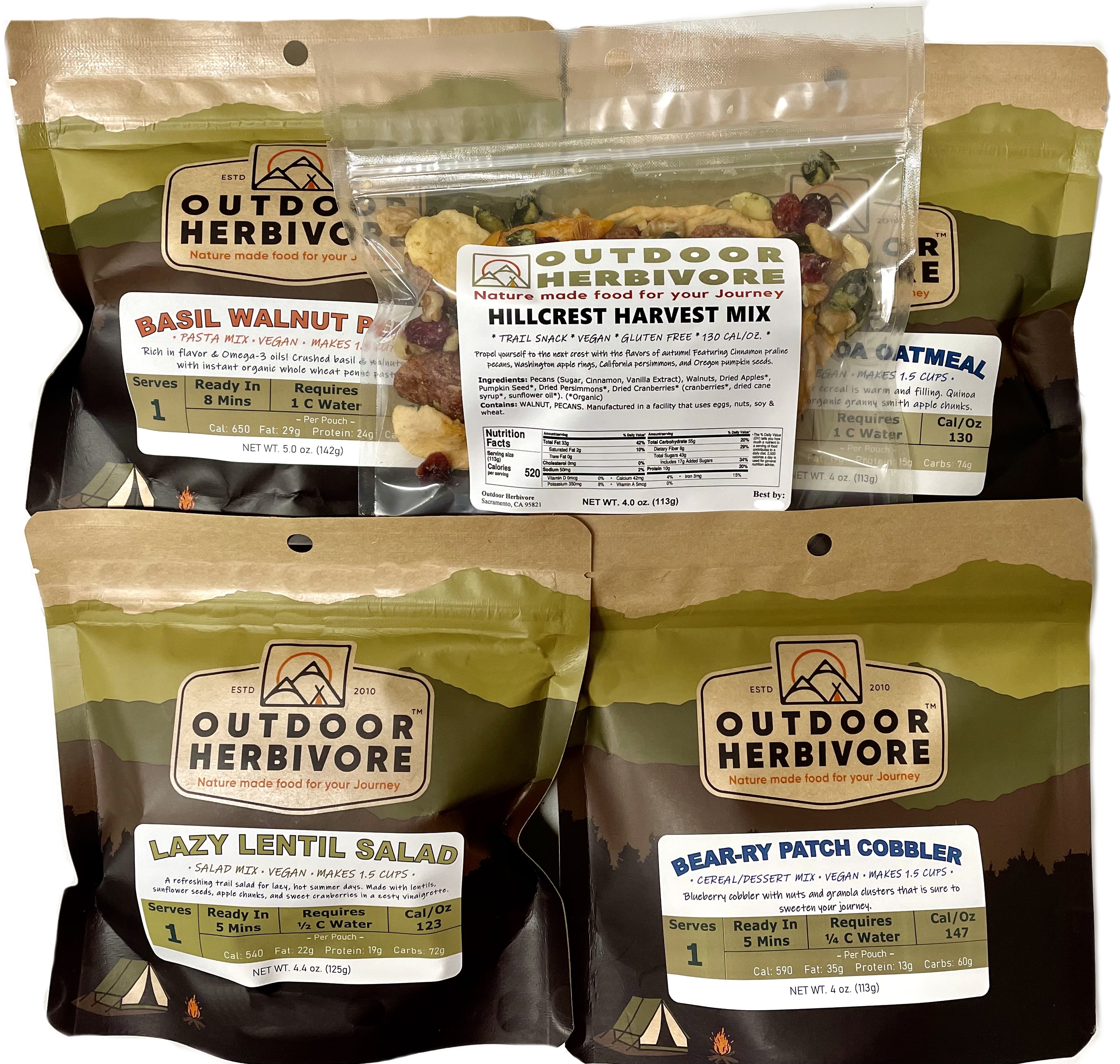
Are you planning a backpacking trip and trying to figure out what to eat? Here are a few tips on finding the best backpacking food to sustain you on the trail.
Purchase Freeze-dried Meals from an Outdoor Retailer
Look for brands intended for backpacking instead of the survival market. The purpose of survival food is to keep you alive in an emergency, not for taste or caloric content. Many contain preservatives for long-term (5+ years) storage and contain no fat. In contrast, backpacking meals are meant to be consumed shortly after purchase and tend to have a shorter shelf-life (less than five years). Backpacking meals are designed to be lightweight, calorie-dense, cook fast, and deliver sustenance and taste.
The downside to all freeze-dried and dehydrated foods is cost. Removing water by either lyophilization or heat drying, which enables these foods to be lightweight and shelf-stable, is time-consuming and requires energy-intensive equipment. However, many backpackers justify the cost because of the convenience and taste. Enjoying a freeze-dried meal is also a memorable part of the backcountry experience.
Purchase Ingredients from a Grocery Store
If you are on a budget, you can assemble trail meals using dried ingredients from the store. When buying grocery store food, look for instant items with cook times of 10 minutes or less. Non-instant dried foods like pasta, quinoa, and rice will deplete your stove fuel quickly. See everyday grocery items that serve well for backpacking.
Pay Attention to Calorie Content
You will need to consume more calories while hiking to prevent fatigue. Caloric requirements for backpacking are high, from 3,000 to 5,000 per day, depending on your level of exertion. You won’t be able to get enough calories by eating three meals a day. Supplement with high-calorie snacks and munch on them throughout the day. When purchasing backpacking food, look for meals and snacks containing at least 100 calories per ounce. Outdoor Herbivore does this calculation for you automatically to make it easier for you to compare meals (see this spreadsheet of all our products).
Another way to quickly find high-calorie meals is to look for high-fat foods. Fat contains 9 calories per gram or 255 calories per ounce. Since it’s difficult to find high-calorie foods, you will need to boost the calorie content of your meals. Be sensible, though, and keep your fat consumption to no more than 30% of your daily calories. Add healthy fats such as olive oil, coconut, nuts, and seeds. See here for a list of vegetable fats by calorie content.
Pay Attention to the Type of Calories
Subsisting on skittles and candy bars will give you instant sugar calories, but that is it. Focus on eating a variety of complex carbohydrates and proteins for optimal endurance and nutrition. Complex carbs provide stable and lasting energy, making them the perfect food for moderate aerobic endurance activities such as backpacking. It is easy to get complex carbs and proteins in a single meal – brown rice, lentils, quinoa, whole grain pasta, sprouted tortilla, and beans – are all excellent sources.
Energy bars make it easy to eat, and some can seem healthy, but they should not consist of your entire trail diet. Many are high in added sugar and have processed protein additives (soy isolate/soy lecithin) and fillers that can contribute to digestive distress and heartburn. Nothing can compare nutritionally to eating real whole food—use dates, nuts, and other dried fruits to make trail bars.
Flavored Drink Mixes and Milk Powder
Besides keeping you hydrated, hot and cold beverage mixes help keep things interesting and add calories. Some choices include citrus mix, herbal tea, soy milk powder, hot chocolate, apple cider, horchata, and a mocha coffee.
Don’t Overlook Fresh Foods
While most fresh foods don’t keep more than two days in your pack, there are a few that will last much longer. Hard fruits and vegetables, such as apples, carrots, and avocados, will keep in your pack for a week or between resupply. You can also grow sprouts on your backpack for multi-day trips.
Pack No-cook Meals and Snacks
Always pack a reserve of ready-to-eat food, such as trail mix and tortillas, to get you by if you are short on water, stove malfunctions, or fuel runs out. Tortillas serve wonderfully as bread to spread nut butter. We enjoy pairing tortillas with no-cook lunches such as instant hummus and powdered peanut butter.
Vary the Cuisine and Texture
Marinara pasta, again? This is especially important for long-distance trips where you will become bored of eating the same foods repeatedly. To keep your palate pleased, choose different cuisines, such as Thai, Indian, Mexican, and Italian, ranging from spicy to creamy. Vary the textures with savory soups, crunchy snacks (chili lime crunchies, seeds/nuts, granola, trail mix), chewy snacks (trail bars, raisins, fruit leather), and sweet desserts.
Related Posts:
One thought on “Planning Your Backpacking Meals”
Thank you for another great blog post – I really enjoy them as they provide a really good info. Keep it up!